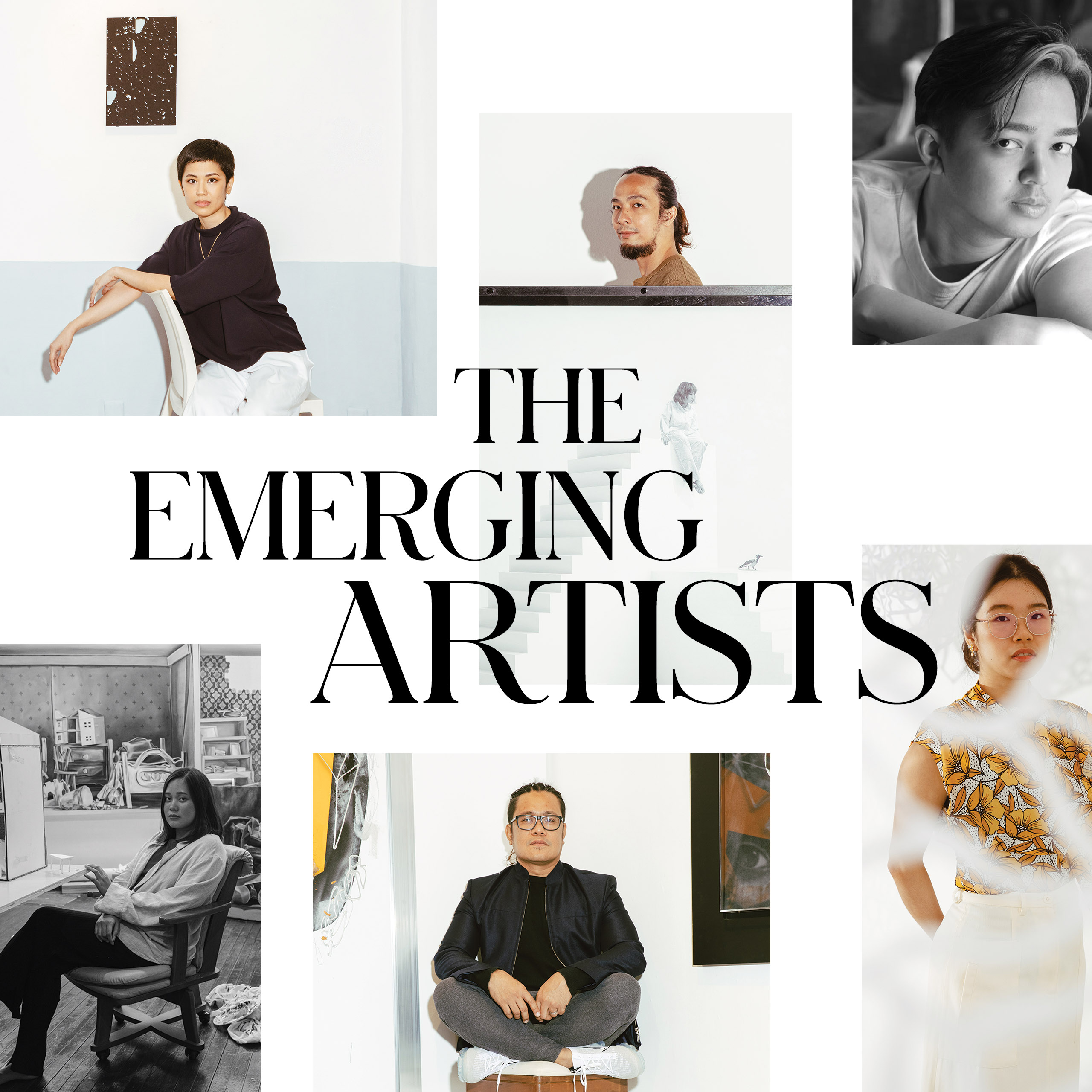Meet MEGA’s Emerging Artists Awardees, who are transcending the limitations of artistic expression and contributing to the progression of the local art landscape
This is an excerpt from MEGA’s June 2023 People feature story 2
With art deeply embedded in the culture of the country, it is no surprise that we are home to some of the most distinct and renowned artists in the world. From visual to performing arts, the country prides itself on its thriving art scene that continues to evolve and innovate.
In a bid to showcase, elevate, and cultivate the local arts, the MEGA team, together with our MEGA Ball co-chair, Sheila Romero, puts the spotlight on 10 of the rising Filipino artists of this generation.
As we embark on an artistic expedition, we have discovered a plethora of talents across various forms of creativity, such as painting, sculpture, and fashion design. These artists are bringing new perspectives and stories to the forefront of the country’s art industry. They draw inspiration from their heritage and create works that both explore and reflect the social narratives relevant to the identity of the Filipino people.
NICE BUENAVENTURA
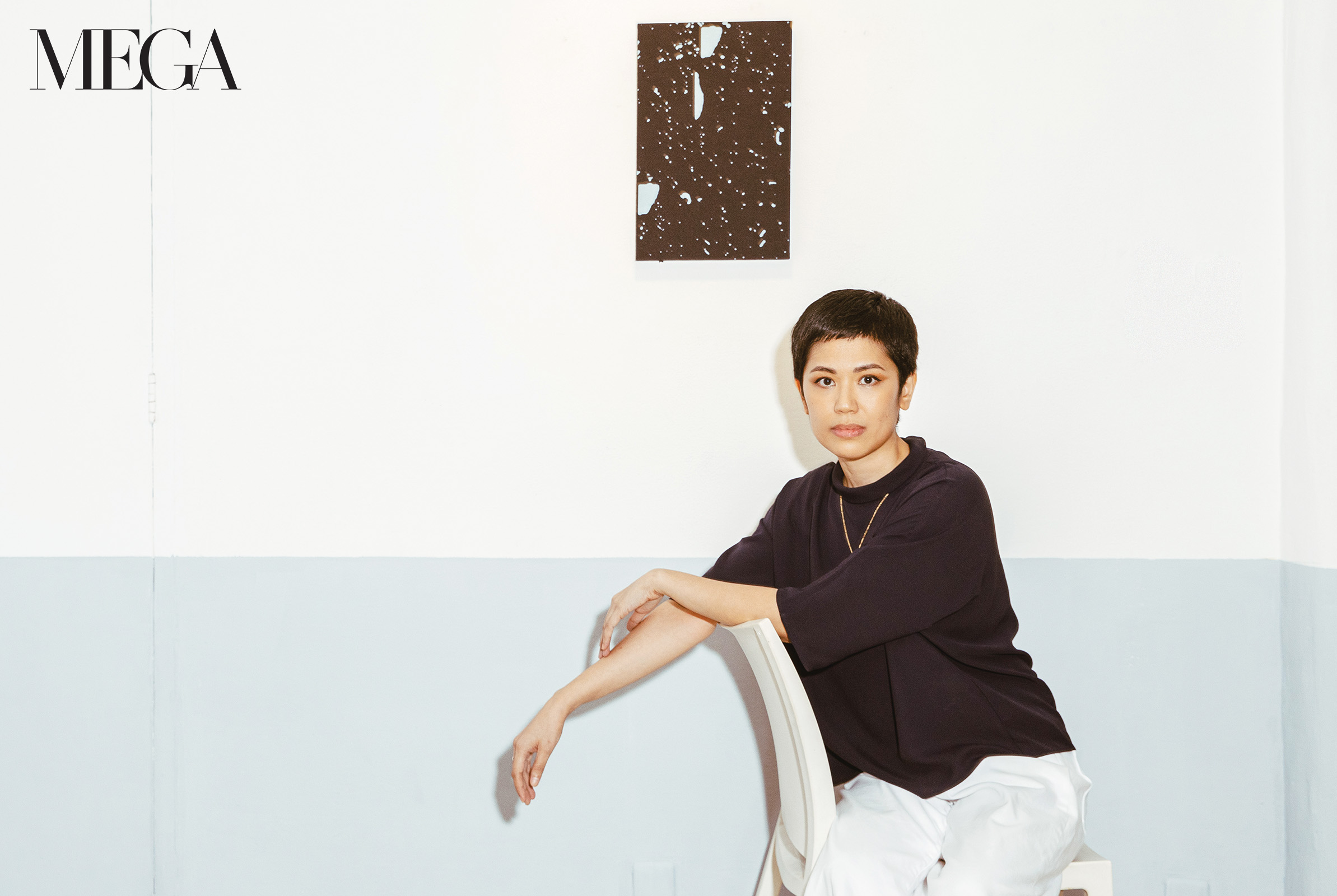
Nice Buenaventura is anything but nice when it comes to releasing her internalized conf licts. She uses art as a medium to translate her stresses and ruminations into something beautiful and thought-provoking.
“I often say that I start off with tension,” Buenaventura tells MEGA. “There would be something that I feel bad about or something I couldn’t understand. And that tension gets offloaded into the process of art-making. So all of my exhibitions have always come from that kind of energy and dissonance.”
With her works exploring pressing societal issues, such as climate crises and social and cultural systems of values and actions, Buenaventura’s art extends far beyond aesthetics. In every artistic pursuit, she makes it her mission to create a piece that can serve as a catalyst for social awareness.
By harnessing the power of visual storytelling through forms of both analog communication and new media, Buenaventura’s art has opened up new avenues for discourse and activism.
LILIANNA MANAHAN
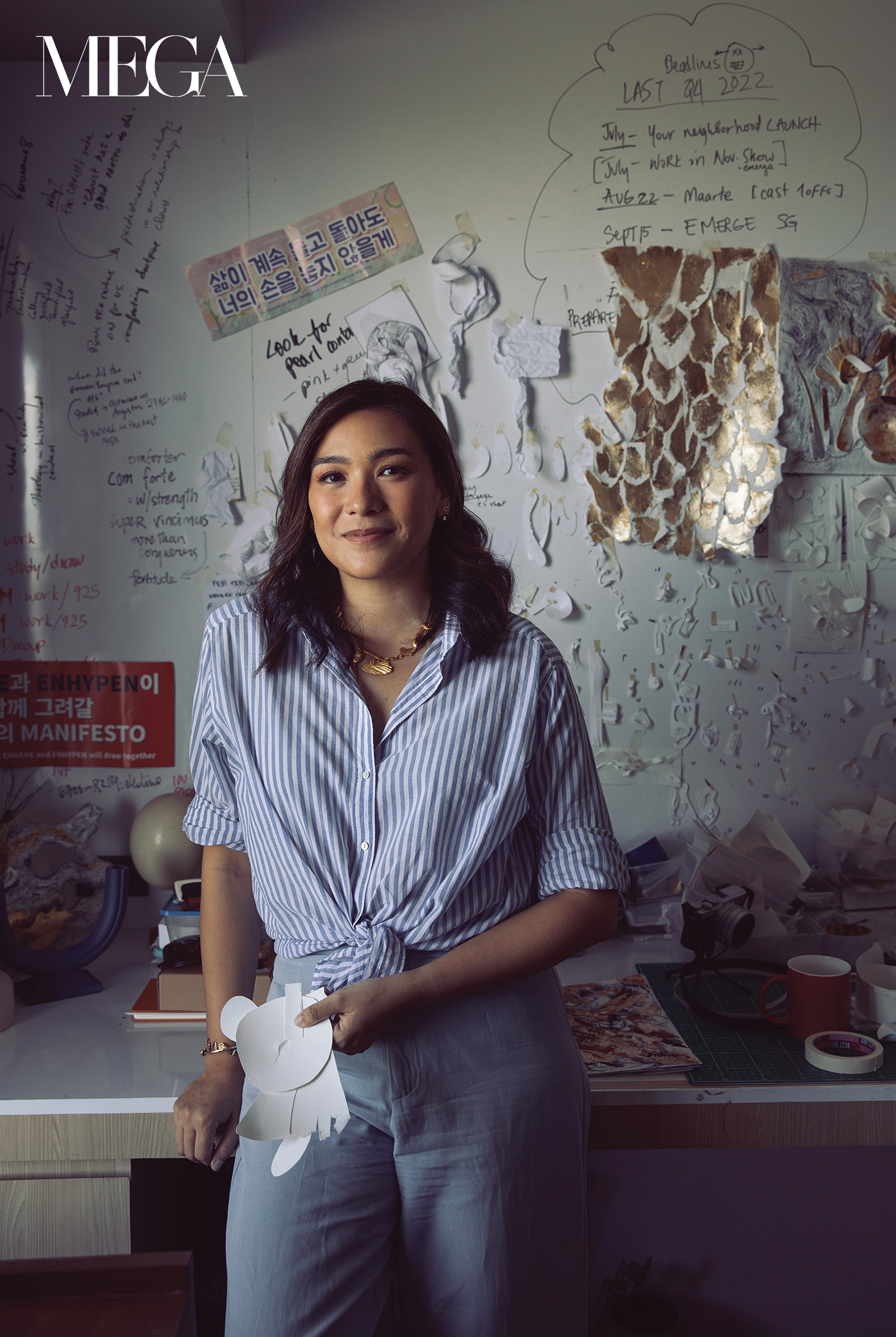
“They are little pockets of treasures”—this is how artist and designer Lilianna Manahan sees her works. Whether it’s a necklace or a tabletop, Manahan’s creations are not just mere objects but rather an extension of her imagination.
But possessing an imaginative mind is one thing; having the guts to experiment and pursue that vision is a completely different story. Fortunately, it’s no daunting task for someone with the creative spirit of Manahan.
Another recurring theme in Manahan’s work is finding beauty in the ordinary things: “I’ve always looked beyond the circumstance, which is why I like making pieces with subjects that have to do with finding little treasures in the mundane.”
By taking the mundane and making it magical, Manahan encourages us to appreciate the beauty in everything. Her art reminds us that there is always something worth exploring and discovering, even in the most familiar of places.
CHELSEA THEODOSSIS
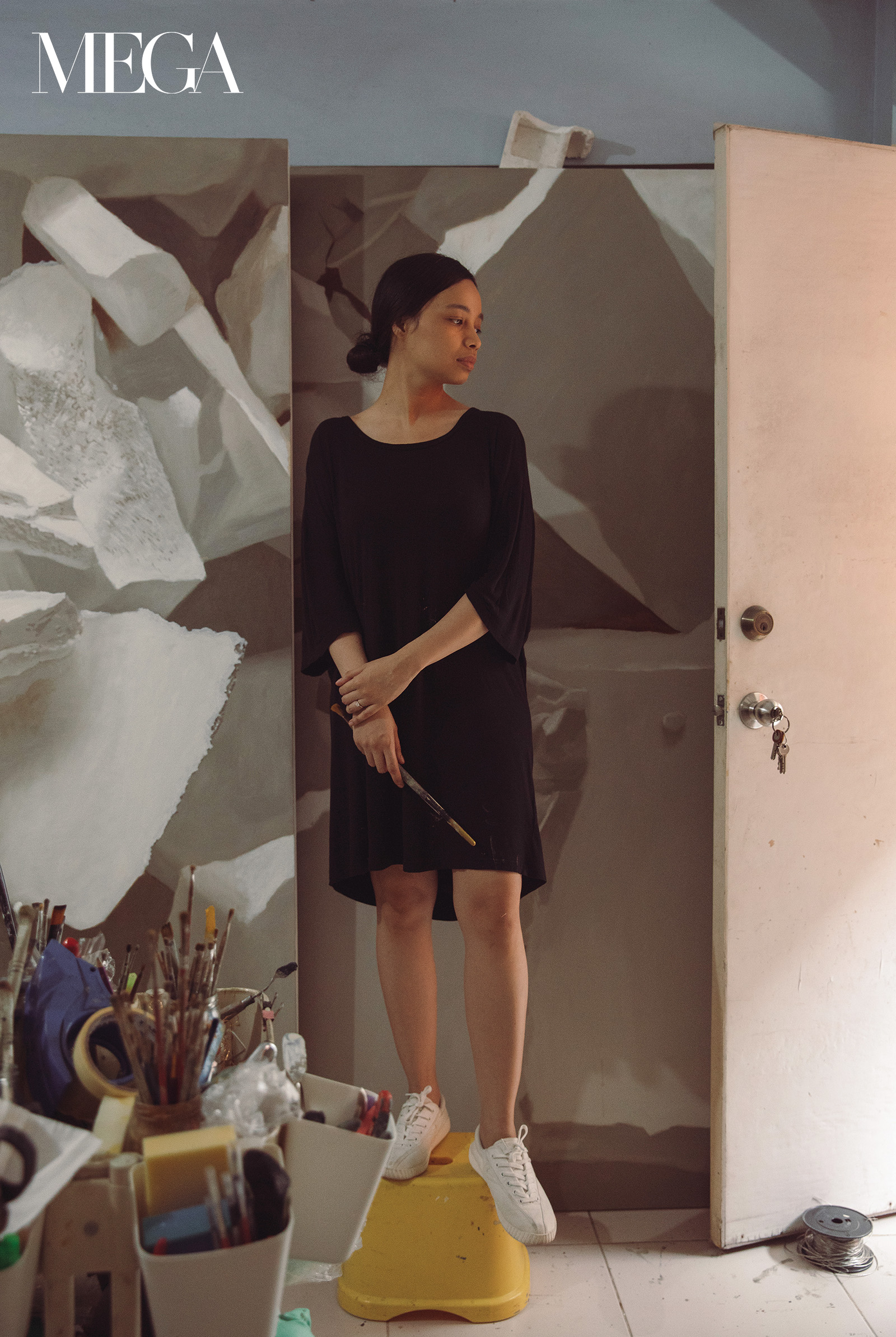
Ever since she was nine years old, Chelsea Theodossis has had a knack for creating art. This potential was further encouraged when her family brought her to art workshops to mold her talent. Not long after, an artist personally mentored her, and she stayed in contact with him over a long period of time—even when she took the pre-medicine route in college.
She pursued pharmacy after graduation, but she was left with this advice: “Give art a chance. Give it two years.” Despite her hesitation, she took the risk, and now, as a full-time artist, she likens the current art scene to a war she’s willing to die in. This idea informs how she creates her works as they grapple with different kinds of personal wars, from psychological all the way to cultural.
Theodossis aims to provoke others and evoke deep feelings through her art. She recounts that some of the most joyful and rewarding moments for her as an artist happen when viewers thank her for expressing something that they are unable to express themselves. But as much as her art is for others, it’s also for her to use in reconciling with internal battles. Interestingly, Theodossis sees her art as a way of saying goodbye, but also as an act of remembering.
YEO KAA
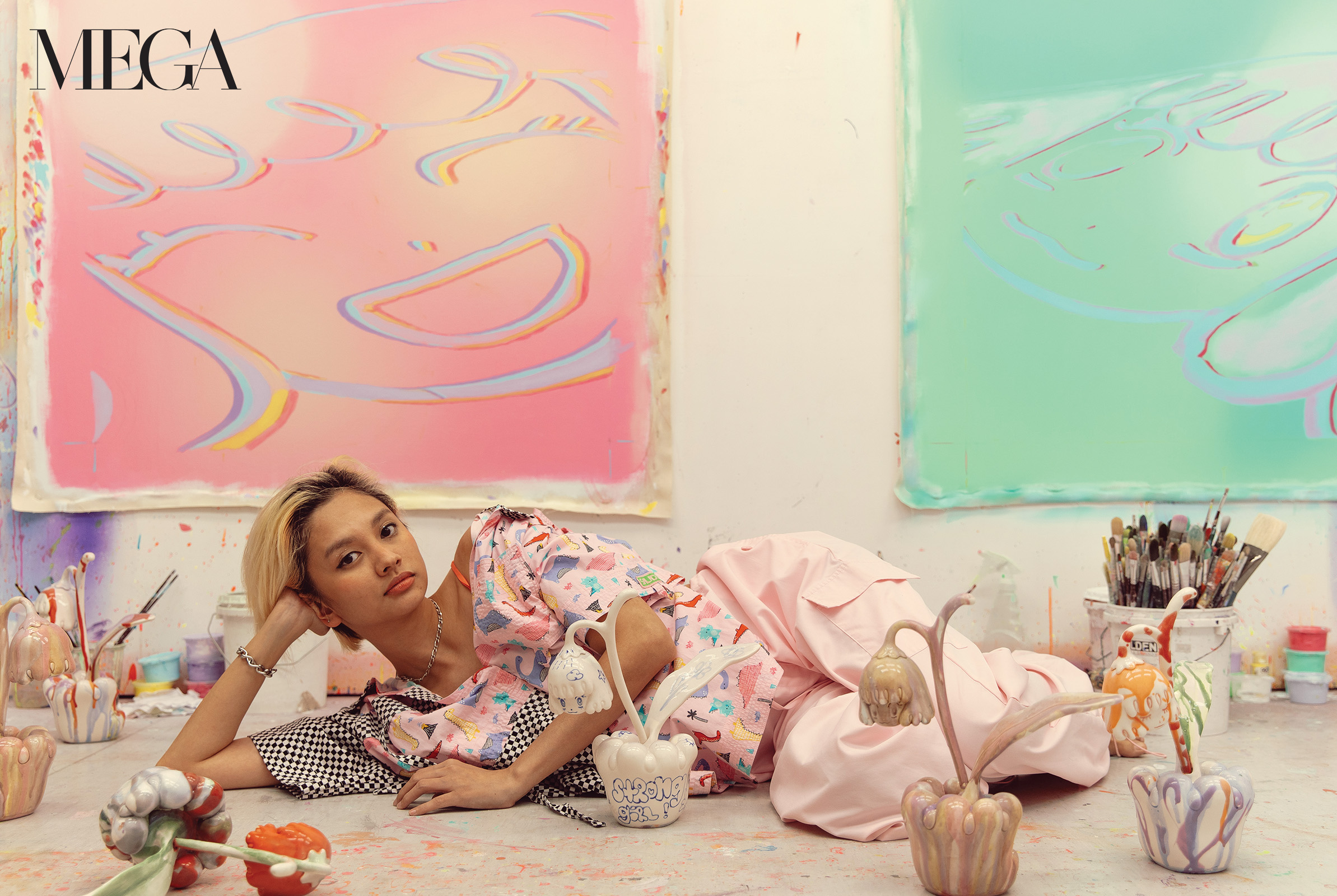
For Yeo Kaa, becoming an artist was almost an accident. Though she has always played with colors and paint in her formative years, she and her family expected her to get into the business field. But in college, she ended up studying fine arts and starting an art group with her then-boyfriend. Suffice to say, she took the unexpected trajectory of her life in stride.
It was also in college that Kaa found her personal style. Since she didn’t feel that realism was her strength, it was a happy happenstance that an assignment on Picasso allowed her to see that art isn’t limited to realism. From there, different aspects of her life left their personal touches on her art style and recurring characters—from the anime movies and shows she would watch to the hairstyles she sported throughout college.
She likens the colorful appeal of her paintings to her positive exterior—as happy as she may look at first glance, there’s mental distress beneath the surface. All that said, she has emerged feeling happier and freer this past year.
JUDE MACASINAG
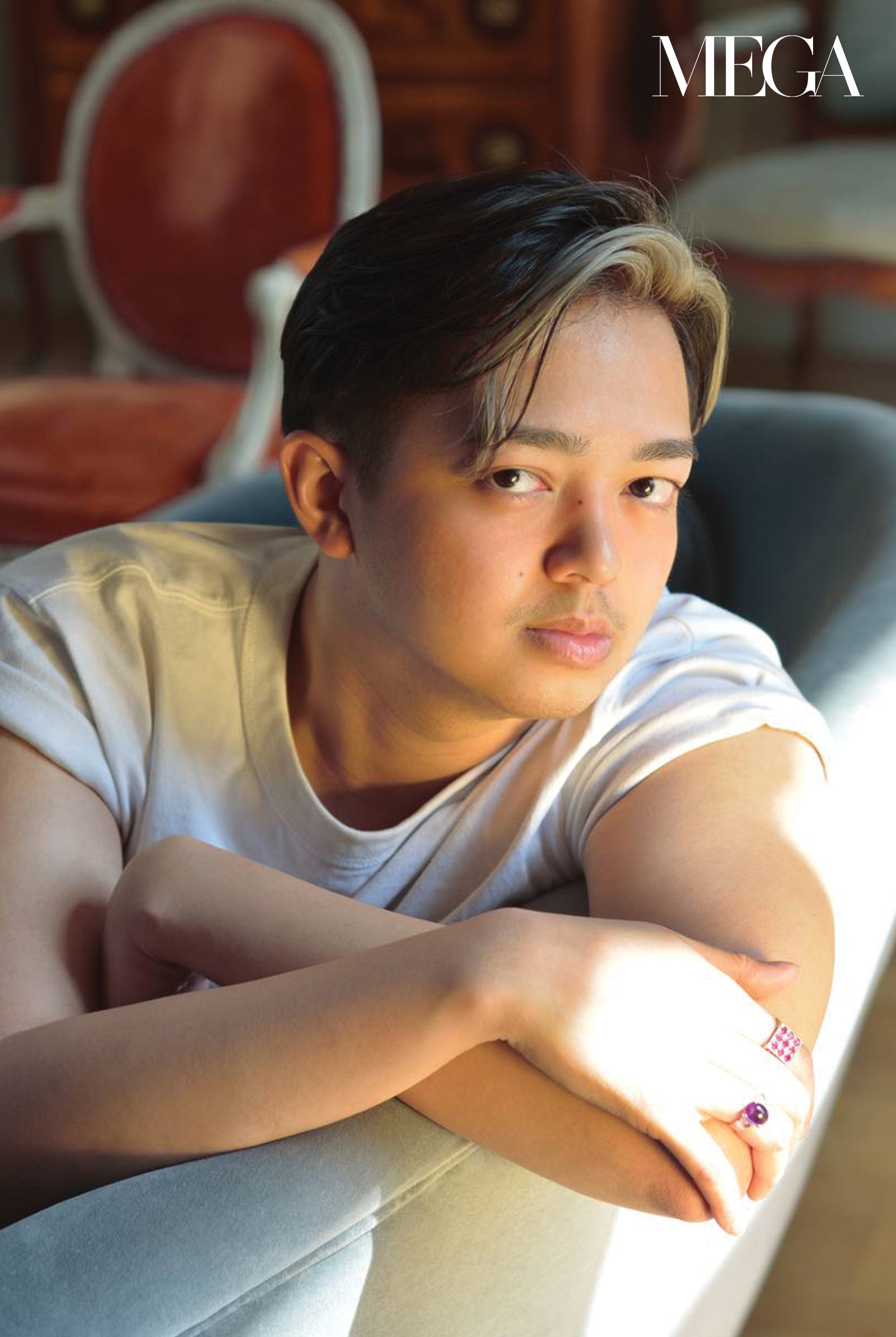
In the world of Philippine fashion, Jude Macasinag is a name that is synonymous with the word unconventional. With his works being lauded in global fashion publications and events, Macasinag is, without a doubt, one of the burgeoning names in fashion design.
Known for his out-of-this-world creations, Macasinag reveals that he employs either a practice- based or a practice-led approach.
“In my process, practice-based research mainly involves looking for multiple references that are relevant to what I want to convey,” Macasinag tells MEGA. “Meanwhile, practice-led research works mostly with the hand; it’s all about working with the material, doing bricolage, draping, and building or sometimes unbuilding objects.”
Despite the designer’s untarnished reputation in fashion at such a young age, Macasinag has a very humble perspective on his craft. He acknowledges that the worth of his work is subjective and depends on the perception of the public.
JINGGOY BUENSUCESO
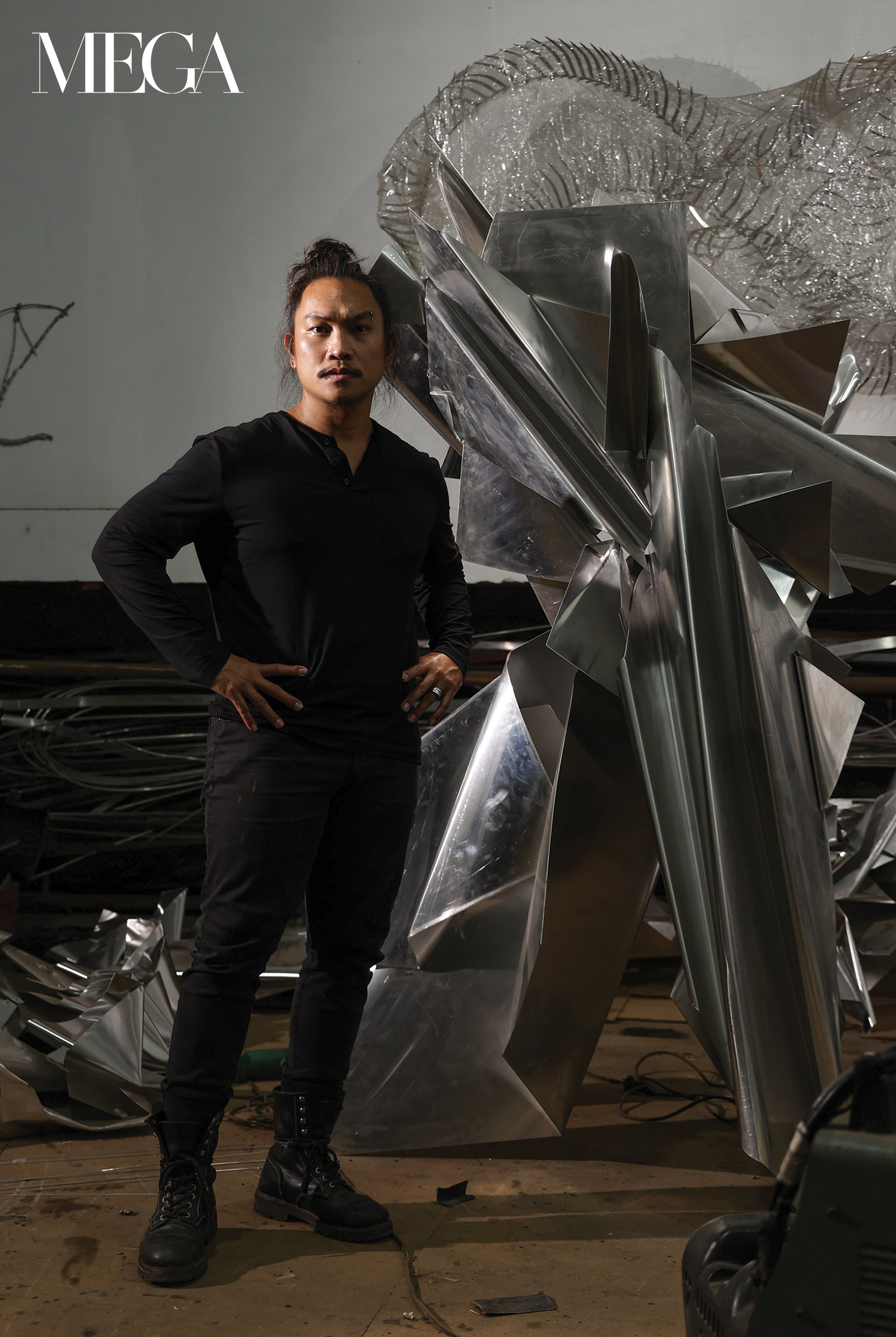
For visual artist and sculptor Jinggoy Buensuceso, it was his inquisitive nature that inspired him to pursue art as he sees it as a way to explore and make sense of the world around him. Through his craft, he finds a medium to express his curiosity and understanding of life.
“I have had a lot of questions about how things are—nature, the cosmos, and my existence—since I was a kid,” he tells MEGA. “With art, a lot of things fold and unfold, I get to discover and rediscover, and so I get to understand.”
But his natural inquisitiveness not only sparked his calling to get into art but it also fueled and continuously drives his passion for creating meaningful and sublime pieces.
AYKA GO
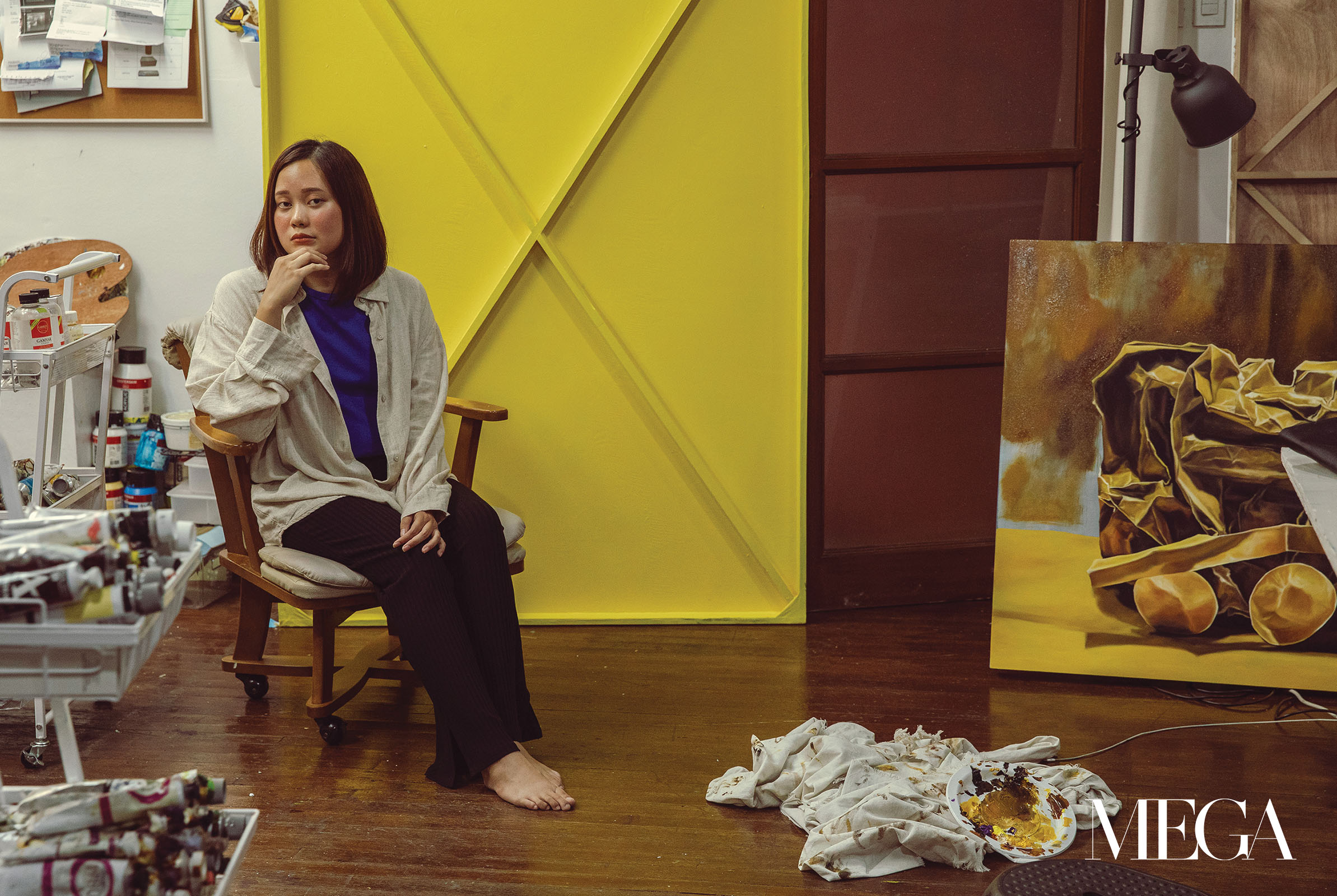
Using paper as precedence to painting on canvas seems like an amplification of artistic expression—two empty spaces for a single idea. But for Ayka Go, paper is a necessity.
It was during her college years, at the University of the Philippines, when Go discovered the vivid message that origami could emit. At the time, her professor asked the class to bring three of their best works, and the origami piece got the highest regard. “That was my least favorite piece,” she reveals, finding the memory jocular. “Then, I started researching and I realized that I’ve been doing stuff with paper ever since I was young. Origami is like make- believe. It’s not the actual object, but it’s a representation.”
Through her works in the last decade, Go has managed to tell stories imbibed by her choices of medium—stories mostly handpicked from childhood explorations. Up to today, there is a playful mix of adult decisiveness in the clarity of her figures and perspectives and child-like inquisitiveness in the way she allows pleats and creases to naturally take form.
DEMI PADUA
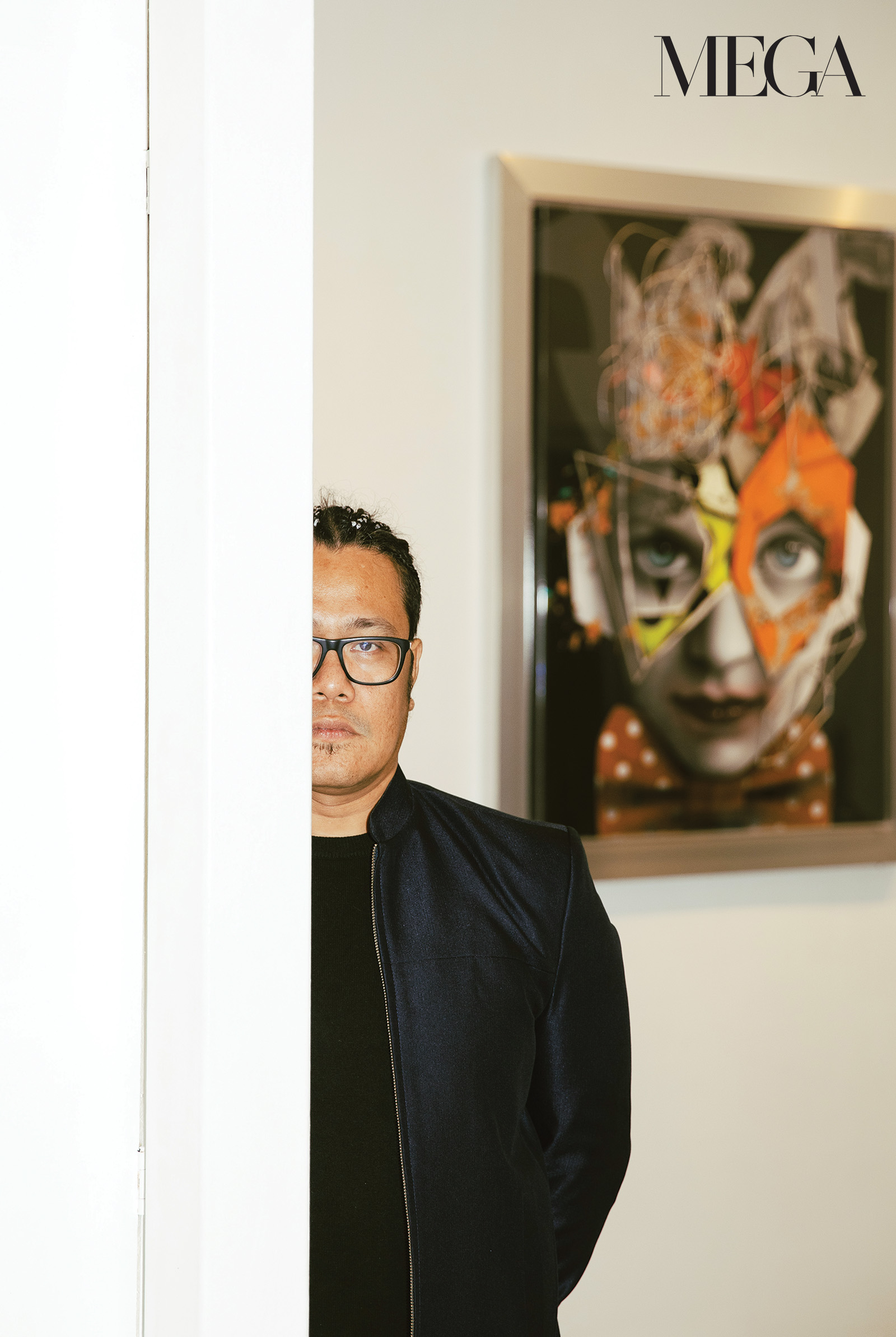
Broken pieces are the soul of Demi Padua’s work. But as opposed to the predicted gloom that comes with anything shattered, Padua’s collections bring light and hope in a world where rarely anything is whole and pure.
Born in Calapan, Mindoro Oriental, Padua came from what he calls, “nothing, sa sobrang baba,” where, at 11 years old, he would join his carpenter father at construction sites. His mother, a dressmaker, would also help the family make ends meet.
With fortune against his side, he learned how to become resourceful and inventive: “Every time makakapulot ako ng mga broken na laruan, kinukuha ko ang good parts and I put them together. ’Yong happiness na nakukuha ko sa buo, galing sa broken pieces. I realized, kaya kong gumawa ng sarili kong happiness. It became a habit.”
This ability to interfuse objects manifests itself in his collections that hold varied parts of a multitude of faces he sees in his everyday life—like those on magazines and books, or faces of people on the streets. Adding grit and texture to his pieces are shapes, colors, and lines that demonstrate his skill in abstract work. While he mixes mediums, his latest ones are done in pure acrylic—also because, for health reasons, he isn’t allowed to breathe in the chemicals in oil paint.
WINNA GO
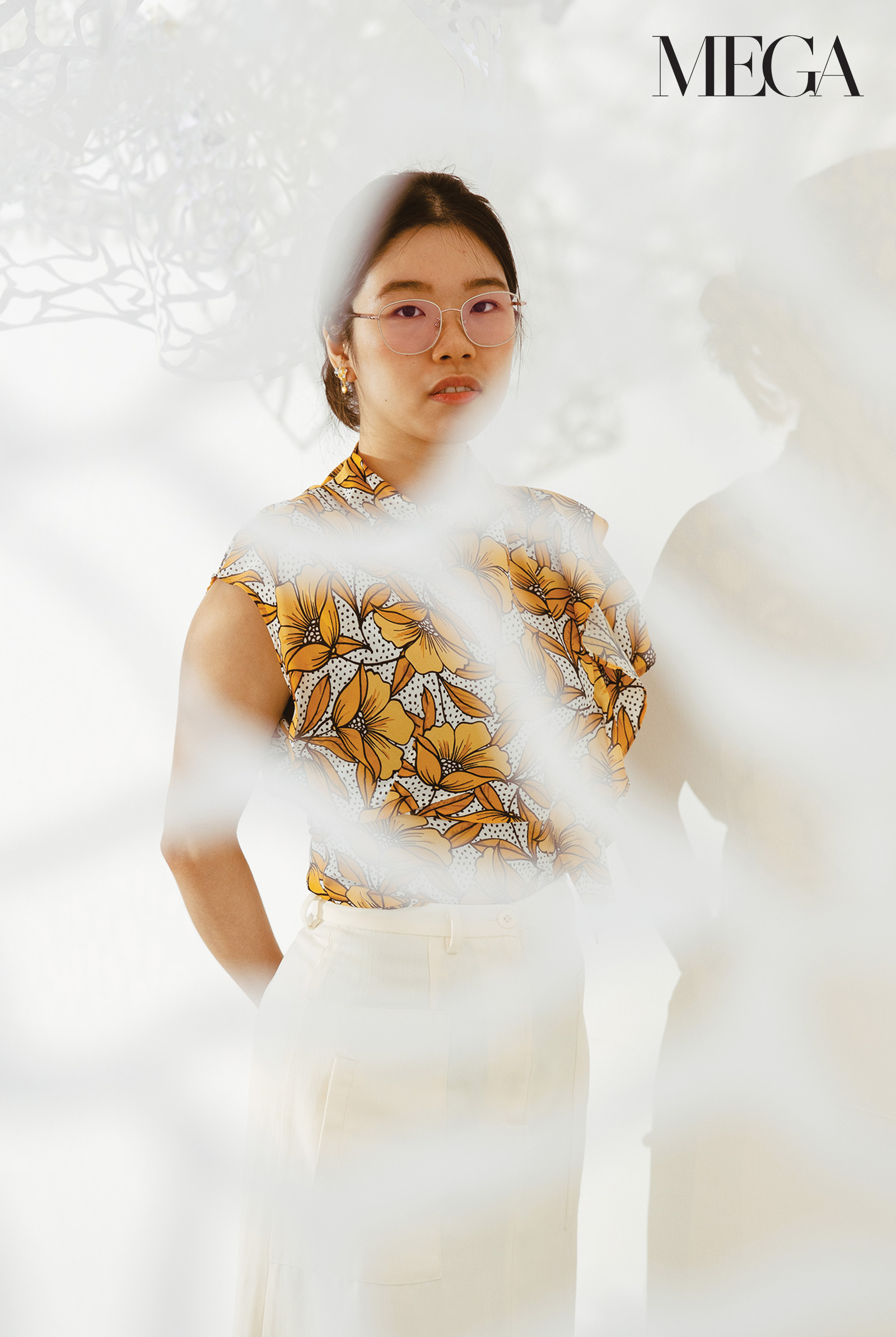
Identity cannot be defined by a single moment or person or feeling. Finding it is always a complex and years-long journey that, for some, only ends at their demise. Winna Go deeply interrogates this complicacy through pieces that center on the traditional Chinese dress, the cheongsam.
In her latest show, Threading Through Time, Go explores homogeneity in heritage, and the archaic notion of its existence. “This is a representation that heritage is not pure; it will always evolve. The lower part of the dresses are deteriorating, a symbol of the deterioration of homogeneity.”
Born and raised in a Filipino-Chinese family, Go’s inclination to pursue her craft grew when her work, which focused on her identity, won at the Philippine Art Awards. “I felt that it was a sign that I should pursue my career,” she explains. “Maybe my art could be a voice or a representation for my culture and heritage. And I wanted to represent identity not in a direct way, like using figures and people, because I feel like a lot of artists are doing that already. With clothing, you can choose whatever you want to wear. It’s like freedom. Our clothes are also like our second skin.”
MARC ARAN REYES
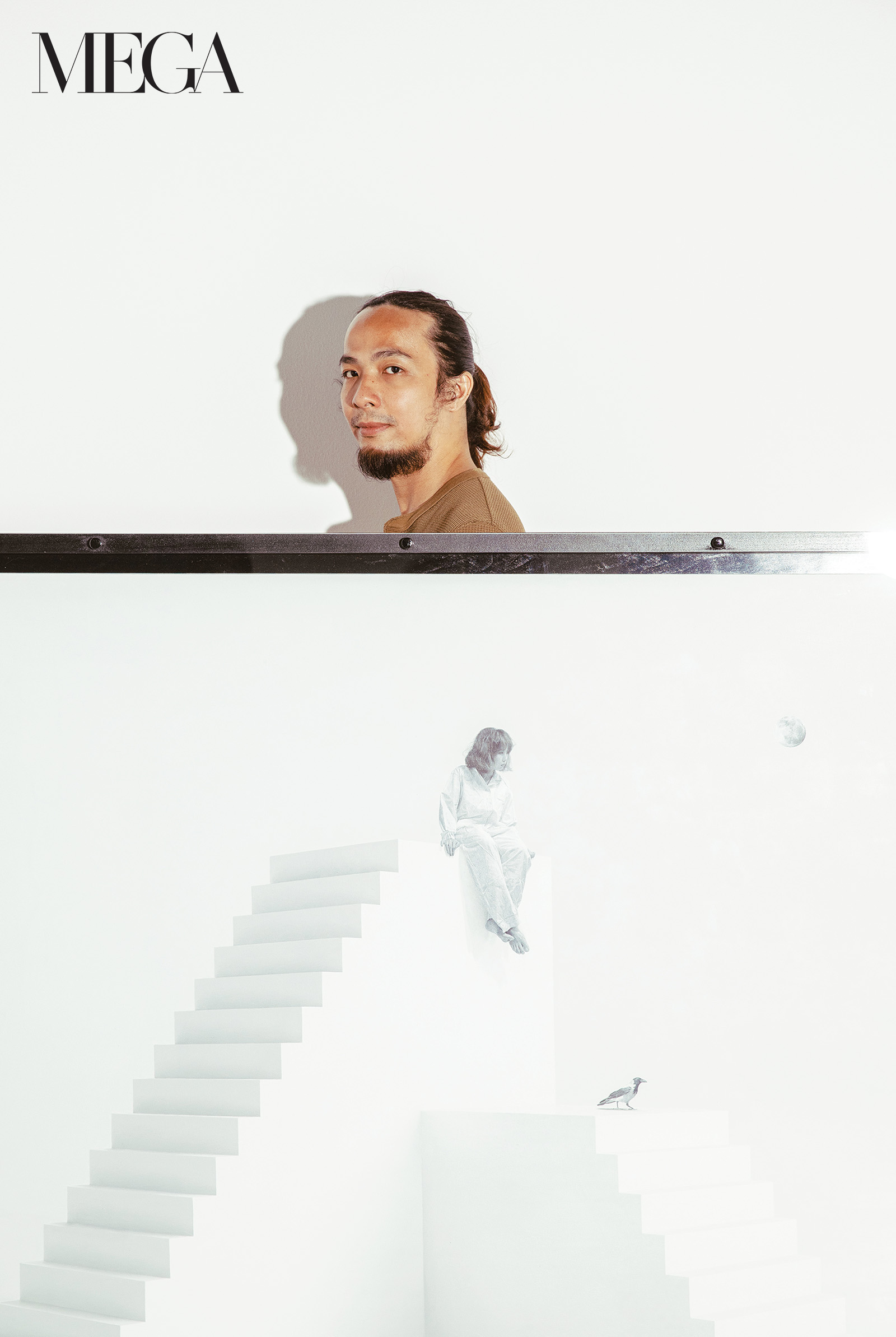
Colors can dictate moods that go far beyond the control of the observer, or in the case of Marc Aran Reyes, the painter. Moods can stretch through time, which is boundless. And because Reyes doesn’t deem it practical to allow himself to be macerated in uncertainty, he does away with colors—deadlines are certain, anyway.
“The feelings that color evokes are momentary,” Reyes, 32, says. “With black and white, I can focus more on the details, elements, representation, and how I can make the scene whole.”
This process wasn’t innate in Reyes. After graduating from college, he explored what he learned from his degree in advertising: minimalism, negative spaces, creating magazines, and women figures in fashion advertisements. His experience still bleeds into his work: the woman character, for instance, is apparent in most of his pieces.
“My paintings are personal,” he explains, in an unhurried way that ref lects on his solemn and peculiar works. “The woman is a character. I try to represent myself in a non-literal way. Tinatago ko lahat sa character ng girl. Puwedeng ako ’yon, puwedeng ibang tao. Now, I’m exploring the idea of having a genderless character. I want to connect with the viewers without the barrier of gender. I want them to see a human being.”
Read the complete stories of these emerging artists in MEGA’s June 2023 issue, now available on Readly, Magzter, Press Reader and Zinio.
